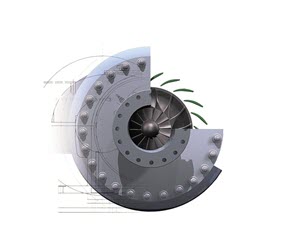Cambridge-based, BeyondMath, a startup specializing in advanced engineering simulation, has raised $8.5 million in seed funding to develop its artificial intelligence-driven multiphysics simulation platform. The funding round was led by UP.Partners, with significant contributions from Insight Partners and InMotion Ventures, the investment arm of JLR.
The company claims its AI platform can accelerate engineering iterations by a factor of 1,000 compared to current solutions. To support this ambitious goal, BeyondMath is among the early adopters of NVIDIA’s DGX H200 system, a high-performance AI supercomputer.
“The NVIDIA DGX H200 is a game-changer for AI-driven simulation,” said Alan Patterson, CEO of BeyondMath. “With its robust computing power, we’re equipped to push the boundaries of what is possible in physics-based engineering.”
BeyondMath’s technology aims to address inefficiencies in traditional engineering simulation tools, which the company says can require up to $50 million supercomputers and take days to process data. The startup’s AI-powered platform is designed to interpret complex physical phenomena crucial for designing various products, from vehicles and aircraft to lithium-ion batteries and data center infrastructure.
“Our platform employs cutting-edge AI trained to decipher the core equations of the physical world, delivering a monumental leap in speed and cost,” Patterson explained.
The company projects significant cost savings for its customers, along with streamlined industry workflows and reduced carbon emissions. This vision aligns with the goals of its investors, including UP.Partners, whose Chairman Adam Grosser said, “BeyondMath represents exactly the kind of paradigm shift we seek to support at UP.Partners.”
Insight Partners’ Managing Director Ganesh Bell highlighted the platform’s potential to “disrupt industries globally,” while InMotion Ventures’ Managing Director Mike Smeed noted its alignment with JLR’s Reimagine strategy.
As BeyondMath moves forward with its seed funding, the company is poised to challenge traditional approaches to engineering simulation, potentially reshaping practices across multiple industries.

